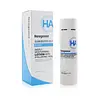What's inside
What's inside
 Key Ingredients
Key Ingredients

 Benefits
Benefits

 Concerns
Concerns

 Ingredients Side-by-side
Ingredients Side-by-side

Water
Skin ConditioningGlycerin
HumectantPropanediol
SolventGlycosyl Trehalose
Emulsion StabilisingPEG-40 Hydrogenated Castor Oil
EmulsifyingHydrogenated Starch Hydrolysate
HumectantChlorphenesin
AntimicrobialAllantoin
Skin ConditioningAcrylates/C10-30 Alkyl Acrylate Crosspolymer
Emulsion StabilisingPhenoxyethanol
PreservativeAloe Barbadensis Leaf Juice
Skin ConditioningSodium Hyaluronate
HumectantSodium Hydroxide
BufferingO-Cymen-5-Ol
AntimicrobialCaprylic/Capric Triglyceride
MaskingSalvia Sclarea Extract
AntiseborrhoeicXanthan Gum
EmulsifyingParfum
MaskingSodium Benzoate
MaskingPotassium Sorbate
PreservativeHyaluronic Acid
HumectantEthylhexyl Palmitate
EmollientSilica Dimethyl Silylate
EmollientCaprylyl Glycol
EmollientButylene Glycol
HumectantWater, Glycerin, Propanediol, Glycosyl Trehalose, PEG-40 Hydrogenated Castor Oil, Hydrogenated Starch Hydrolysate, Chlorphenesin, Allantoin, Acrylates/C10-30 Alkyl Acrylate Crosspolymer, Phenoxyethanol, Aloe Barbadensis Leaf Juice, Sodium Hyaluronate, Sodium Hydroxide, O-Cymen-5-Ol, Caprylic/Capric Triglyceride, Salvia Sclarea Extract, Xanthan Gum, Parfum, Sodium Benzoate, Potassium Sorbate, Hyaluronic Acid, Ethylhexyl Palmitate, Silica Dimethyl Silylate, Caprylyl Glycol, Butylene Glycol
Ingredients Explained
These ingredients are found in both products.
Ingredients higher up in an ingredient list are typically present in a larger amount.
Butylene Glycol (or BG) is used within cosmetic products for a few different reasons:
Overall, Butylene Glycol is a safe and well-rounded ingredient that works well with other ingredients.
Though this ingredient works well with most skin types, some people with sensitive skin may experience a reaction such as allergic rashes, closed comedones, or itchiness.
Learn more about Butylene GlycolPhenoxyethanol is a preservative that has germicide, antimicrobial, and aromatic properties. Studies show that phenoxyethanol can prevent microbial growth. By itself, it has a scent that is similar to that of a rose.
It's often used in formulations along with Caprylyl Glycol to preserve the shelf life of products.
Propanediol is an all-star ingredient. It softens, hydrates, and smooths the skin.
It’s often used to:
Propanediol is not likely to cause sensitivity and considered safe to use. It is derived from corn or petroleum with a clear color and no scent.
Learn more about PropanediolSodium Hyaluronate is hyaluronic acid's salt form. It is commonly derived from the sodium salt of hyaluronic acid.
Like hyaluronic acid, it is great at holding water and acts as a humectant. This makes it a great skin hydrating ingredient.
Sodium Hyaluronate is naturally occurring in our bodies and is mostly found in eye fluid and joints.
These are some other common types of Hyaluronic Acid:
Learn more about Sodium HyaluronateSodium Hydroxide is also known as lye or caustic soda. It is used to adjust the pH of products; many ingredients require a specific pH to be effective.
In small amounts, sodium hydroxide is considered safe to use. However, large amounts may cause chemical burns due to its high alkaline.
Your skin has a natural pH and acid mantle. This acid mantle helps prevent harmful bacteria from breaking through. The acid mantle also helps keep your skin hydrated.
"Alkaline" refers to a high pH level. A low pH level would be considered acidic.
Learn more about Sodium HydroxideWater. It's the most common cosmetic ingredient of all. You'll usually see it at the top of ingredient lists, meaning that it makes up the largest part of the product.
So why is it so popular? Water most often acts as a solvent - this means that it helps dissolve other ingredients into the formulation.
You'll also recognize water as that liquid we all need to stay alive. If you see this, drink a glass of water. Stay hydrated!
Learn more about Water